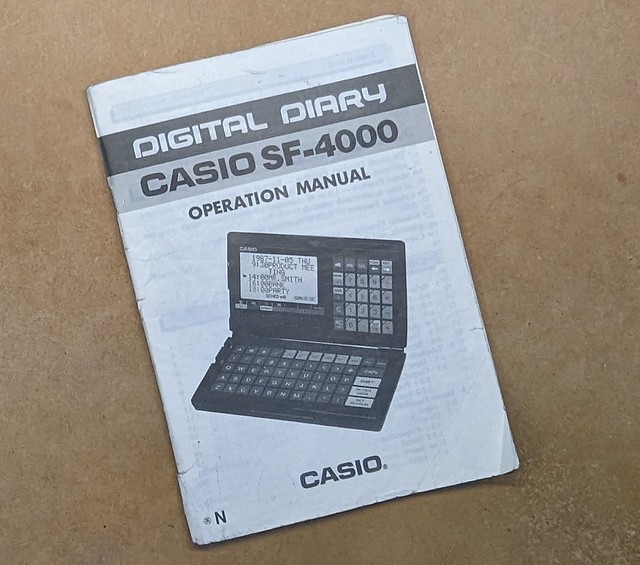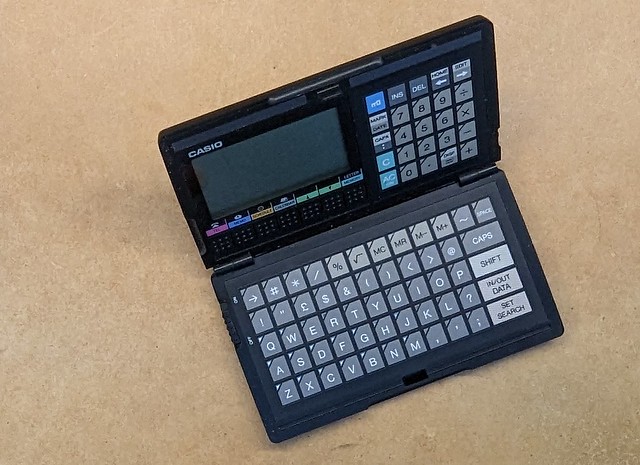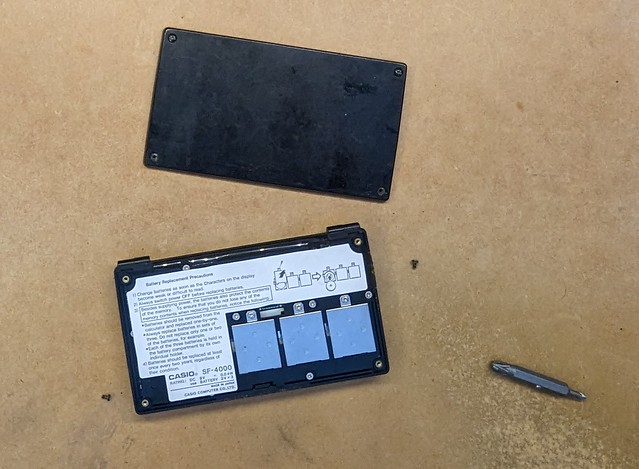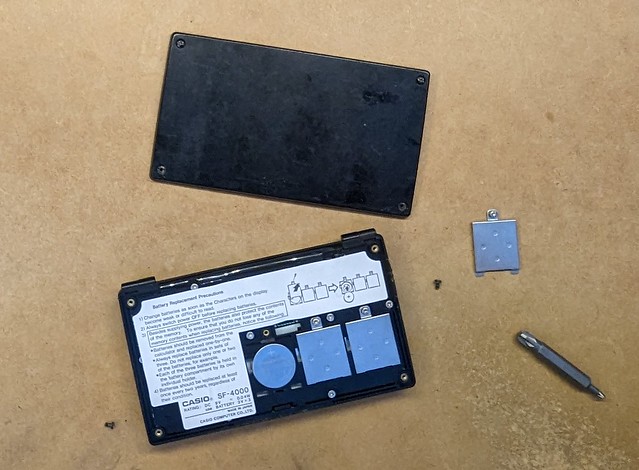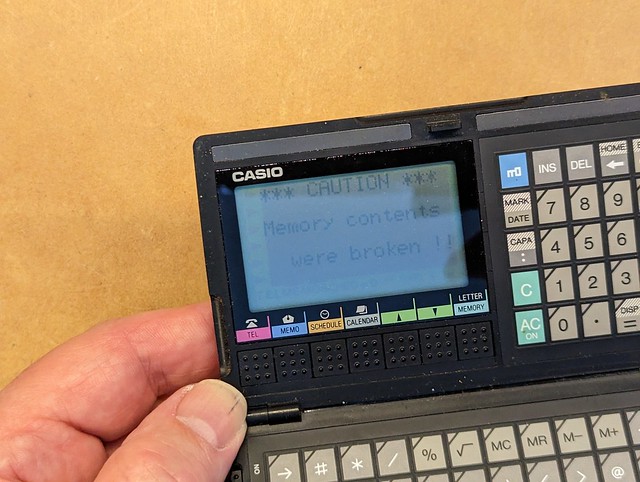5th April 2023
London Buses Route 465 has the distinction of reaching the furthest distance from London, well measured from Trafalgar Square at least, of any London Bus. It runs between Kingston which used to be in Surrey until 1965 and Dorking which is still very definitely in Surrey. The route is jointly contracted out by TfL and Surrey County Council. For no particular reason other than Route 465 has the distinction of reaching the furthest distance from London I went for a ride on it, starting at Dorking Deepdene railway station because that was the easiest end for me to get to. For varying values of 'easiest' due to GWR's inability to run a reliable train service.
So an hour later than planned I was waiting at Dorking Station Stop A watching out for a red bus.

An ADL Enviro200 MMC fn1 reg. no. SN17 MVP duly appeared on time and I climbed aboard and waved my Oyster Card, found a seat at the back, and settled down for the 1h 13m journey to Kingston. I don’t think this was the most comfortable bus for a longish journey, the seats are small and there is hardly any leg room - I had to sit at an angle. It was busier than I’d expected though on a midweek afternoon, there being half-a-dozen on board when I joined.
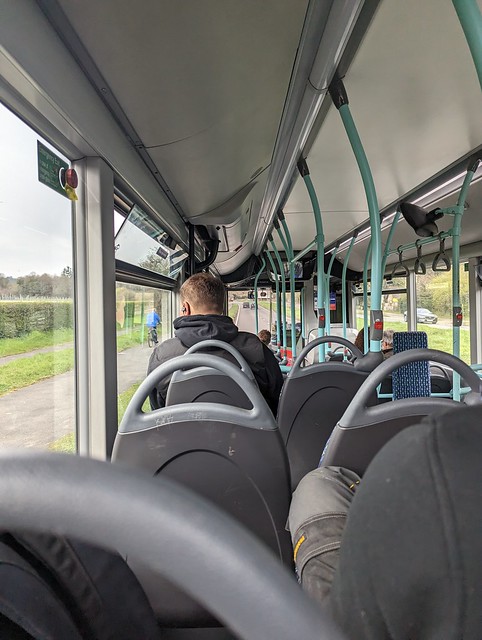
The bloke in front of me was already settled into alternately sodcasting Tik-Tok or Instagram videos and having a text based argument via Google Translate, occasionally breaking off to talk to his companion on the other side of the bus. Heading out through Westhumble towards Mickleham the bus was held up by the inevitable Surrey Mamils heading up to the Zig Zag Road for the ascent of Box Hill and in Mickleham itself we halted outside the delightfully villagey Running Horses pub to allow the Dorking-bound 465 to pass by in the narrow street.
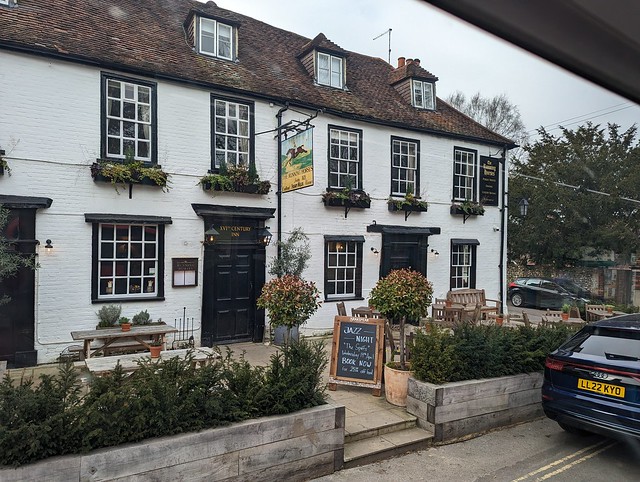
So far, so slow but the other side of Mickleham the bus gets a faster run on some open roads, the A24 and A246 before turning north east to Leatherhead on the B2122.
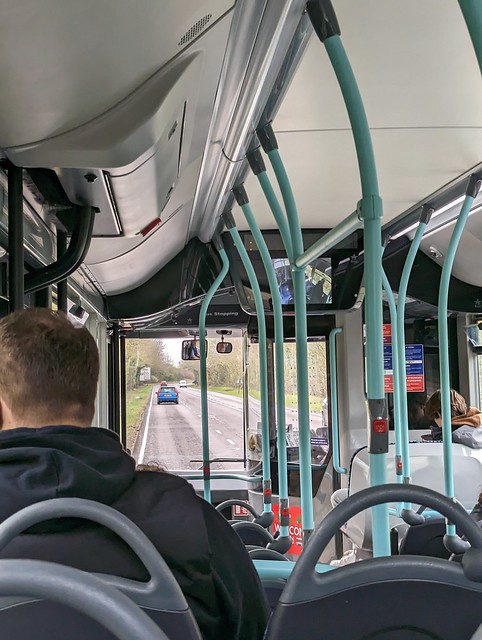
Threading our way through Leatherhead town centre I suddenly recognised the Telephone Exchange which I’d visited long ago in a former existence and next to it the Royal Mail Delivery Office, the windows of which will remind British persons of a certain age of a children’s television programme fn2
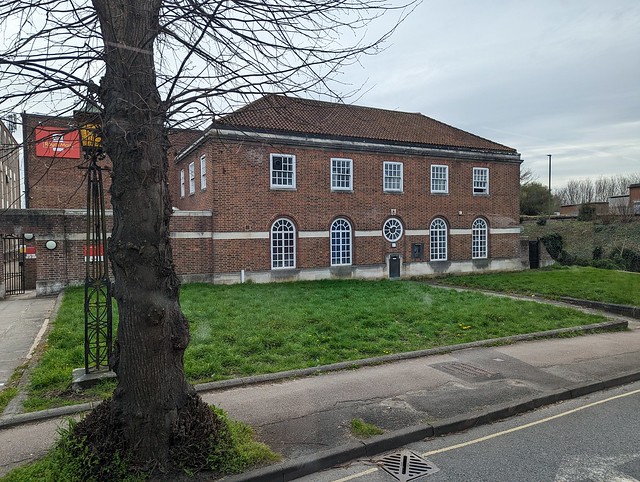
We followed a local bus into Leatherhead Railway Station forecourt which proved to be too small for all of us, the local bus, a rail replacement double-decker, and assorted cars resulting in a short wait while the gridlock was resolved and we could get on our way.
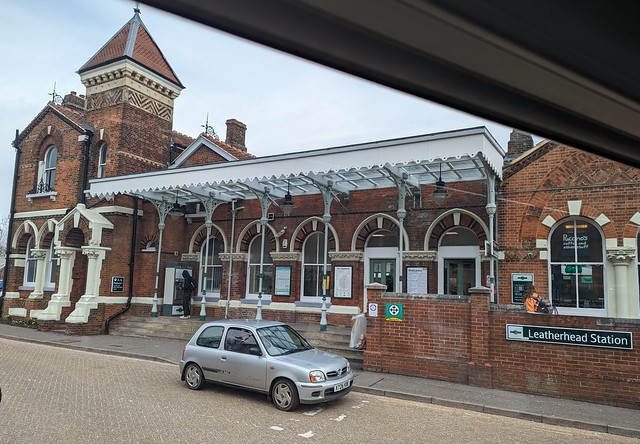
North of Leatherhead we crossed over the M25 so were definitely getting more Londonish and I didn’t realize we were about to do that so completely failed to get a photo. Not long after that we passed The Star pub at Malden Rushett which I recognised from reading Diamond Geezer’s blog that morning. I was unable to get a photo of that either but DG did, being not on a bus at the time, so you can look at it there. We were now officially in that London, albeit a dangly outlying bit of it.
The next notable destination is Chessington World Of Adventures. I think I recall going there many moons ago with ex-no.1, her younger son, and her nephew. I can also remember when it was Chesington Zoo. The bus pulled into the little bus station but there wasn’t anyone on board up for that sort of adventure and no one waiting to get aboard.

From here north it got progressively more suburban, crossing the A3 near Tolworth and through Surbiton where the bus filled up quite a bit, unfortunately preventing me getting a shot of the marvellous 1937 Art Deco railway station building. About five minutes later we turned right out of Surbiton Road and followed the River Thames into Kingston town centre.
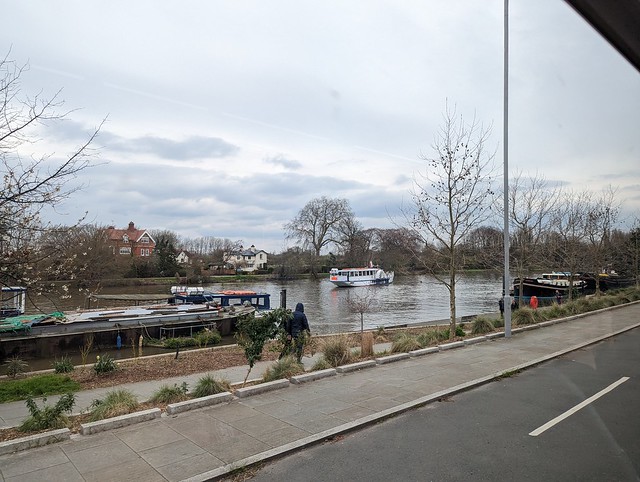
Kingston, or Kingston upon Thames (or before 1965 Kingston-upon-Thames) was until 2021 the location of Surrey County Council even though it was no longer in Surrey. The council then upped sticks and moved to Reigate having rejected (some might say wisely) moving to Woking. It’s a major shopping destination now of which I have a vague recollection of being dragged around by a couple of Slovaks fn3 one day but apart from that had only wandered around the town centre early one evening when the shopping crowds had dispersed. The 465 wriggles through the busy town centre, dropping most of its passengers off at Eden Street for the shopping centres before terminating at the Bus Station in Cromwell Road where I alighted and was glad to see that unlike so much of England the toilets hadn’t been closed.

I went. And then I went for a walk around Kingston in search of coffee, decided it was still too early to eat, and then returned to the bus station to get the 1721 departure on the 465 back to Dorking. For some reason the TfL Go app completely ignored the existence of this bus insisting that the next departure wasn’t until 1751, even while I was sitting next to it for ten minutes in the bus station. Google Maps knew better. Google 1 TfL 0. Not for the first time.
The return journey was busier than the outward one but much more comfortable. I had intended grabbing one of the “priority” seats so I could have enough legroom to avoid cramp but as it turned out ADL Enviro200 MMC LJ16 EXW fn4 had enough space between all the seats so I could ride in comfort guilt-free. Albeit older this bus looked to have been refurbished with different moquette on the seats and onboard displays. Maybe they changed the seating plan. Ask someone who knows about buses, I’ve no idea.
My train home from Dorking ran on time for a change.
fn1. No I’m not, I looked it up online :-P.
fn2 Play School, if you know, you know.
fn3 Not entirely unwillingly I’ll admit.
fn4 I looked that one up as well.
